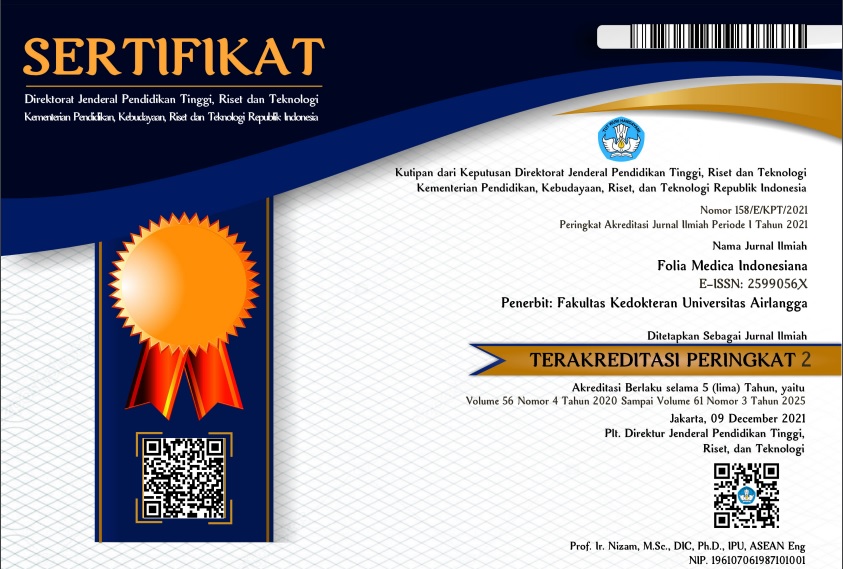Abstract
Functional problems and appearance may emerge if careful therapy is not applied in orbital fracture caused by maxillofacial trauma. Recently, the focus of fracture management on fragment fixation most possibly uses anatomy approach. The management of blowout fracture should be overcome by involving several departments. First, identification was carried out in emergency room and then it is consulted to occuloplasty and maxillofacial trauma surgeon. Multidisciplinary management will provide better outcome to retrieve face structural function and improve the appearance. We reported two cases of blowout fracture complex in Dr. Soetomo Hospital, Surabaya, Indonesia, done by Plastic Reconstruction Division of ORL-HNS Department in collaboration with Plastic Reconstruction Division of Ophthalmology Department. In the first case, a 64-year-old female was consulted by Plastic Reconstruction Division of Ophthalmology Department with diagnosis of right orbital adnexal injury, open eye globe injury, scleral laceration, and blowout fracture. In the second case, a 37-year-old male came to Plastic Reconstruction Division of ORL HNS Department, consulted by Plastic Reconstruction of Ophthalmology Department with diagnosis of left cornea and scleral laceration, left full thickness laceration palpebral at 1/3 nasal inferior, rupture of lacrimal canal, and blowout fracture. These cases of blowout fracture with rim orbita fracture complex type were managed well by Plastic Reconstruction Division of ORL-HNS and Plastic Reconstruction Division of Ophthalmology Department. It is apparent that multidisciplinary management was required for optimum outcome.
Keywords
Orbital fracture, maxillofacial trauma, blowout fracture type, plastic reconstruction, multidisciplinary management
First Page
74
Last Page
81
DOI
10.20473/fmi.v55i1.24438
Publication Date
3-31-2019
Recommended Citation
Helmi, Fauzi and Santoso, Boedy Setya
(2019)
"Blowout Fracture Complex Type,"
Folia Medica Indonesiana: Vol. 55:
No.
1, Article 14.
DOI: 10.20473/fmi.v55i1.24438
Available at:
https://scholarly.unair.ac.id/fk-fmi/vol55/iss1/14






